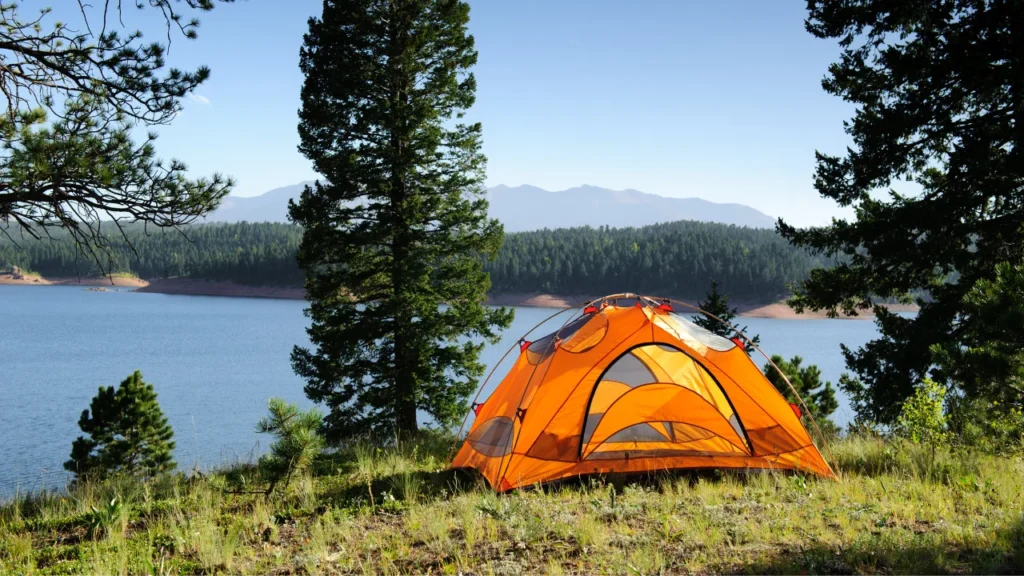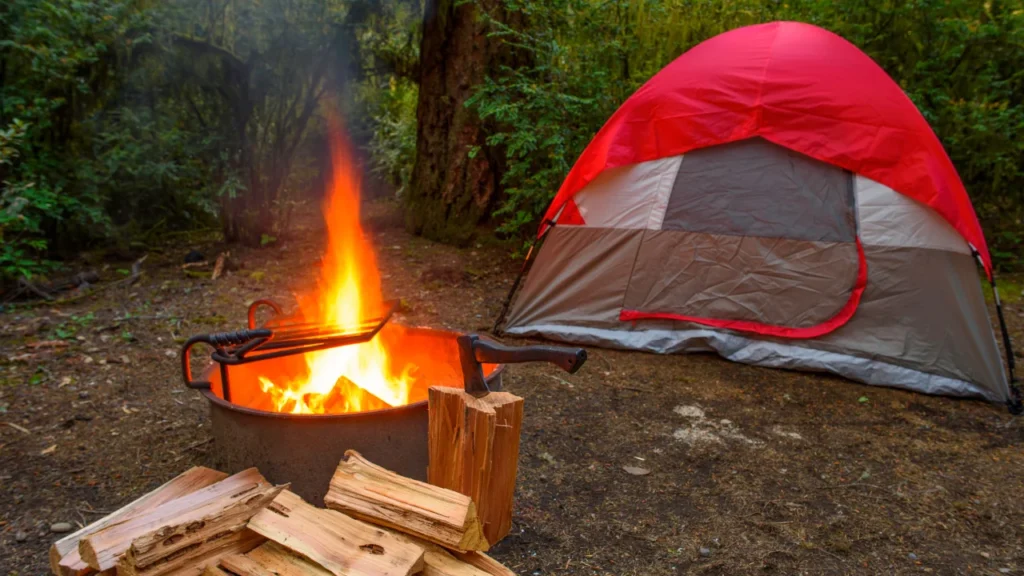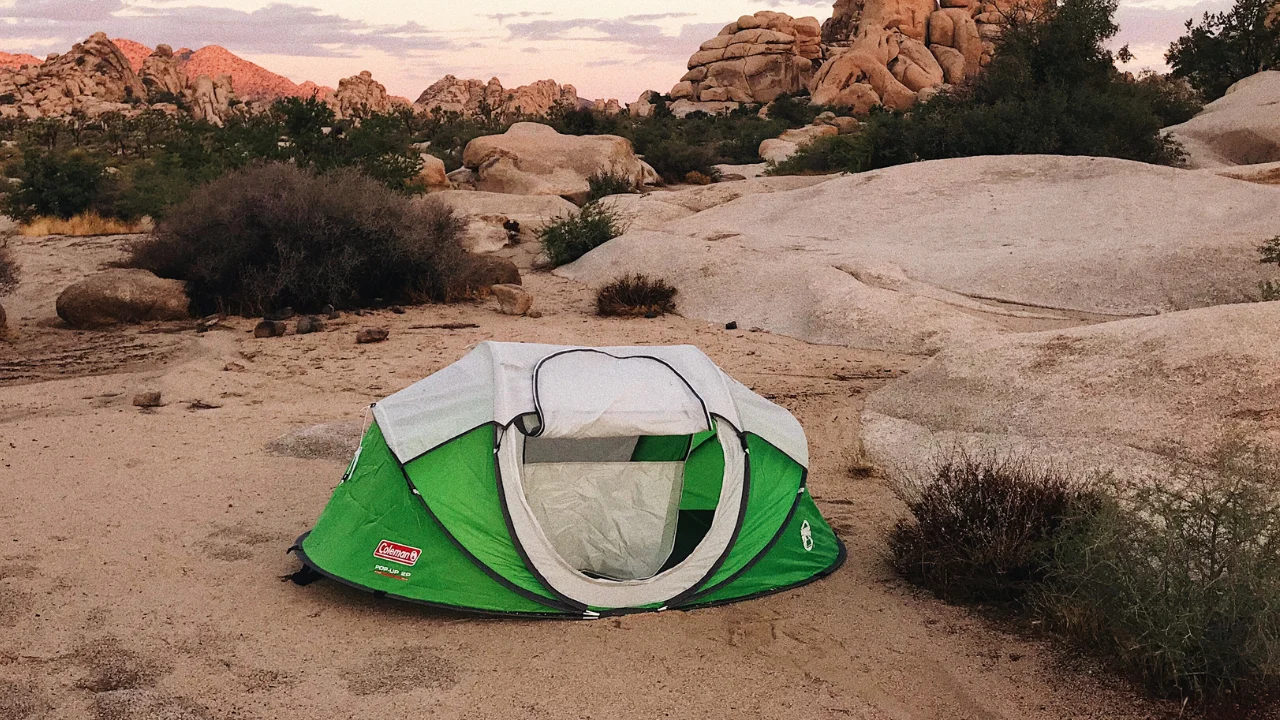
Camping in a Tent – Embrace the Wild Comfort
For many people, camping in a tent is the perfect escape from the hustle and bustle of modern life. It’s a chance to refuel and reconnect with nature, but it can also feel intimidating, especially if it’s your first time. Assembling your tent might feel like an IKEA challenge, especially when the instructions seem confusing, and you’re not sure how to pitch it properly. A common mistake many new campers make is relying on the cheap stakes that come with the tent. Instead, you can find aluminum ones on Amazon for just $10, making your setup more secure. Whether you’re in an urban environment or dreaming of a peaceful getaway in the mountains, getting the right gear is crucial. With some helpful tips and guidance from an outdoorsy friend or a trusted source, you can make your trip more comfortable and pleasurable. The journey might seem daunting, but with the right gear selection and some simple prep, you’ll soon be ready to hit the road to your campsite by the beautiful Lake George, NY. Keep in mind that, even in the shoulder seasons, the temperature can change unexpectedly, so understanding how to stay warm is vital to avoid turning a dream trip into a nightmarish experience.
Tips for Camping in a Tent
Choosing The Right Tent
When you’re planning a camping trip, choosing the right tent is essential for a comfortable experience. First, decide whether you’ll be backpacking or if you need a tent that you can carry long distances. Think about whether you want a tent that lets you stand up inside and consider the seasons you’ll be camping in. Don’t forget about a footprint or rainfly to keep your tent safe from the elements. You’ll also need to know the difference between water-resistant and waterproof; the latter fully blocks out moisture, while the former only deters it. Setting up your tent should be quick and easy, taking no more than 5 minutes if you’re prepared. If you’re not a seasoned camper, it’s best to practice setting up your tent ahead of time in your living room or backyard with a friend or family member. This way, you’ll avoid fumbling with tent poles and pieces when the light starts to fade. Remember, it’s all about knowing the ropes before you get out there!
Tent Size and Camping Locations
When choosing a tent, always keep in mind that the number of people a tent claims to fit might not be entirely accurate if you’re concerned about space. For example, a two-person tent might be comfortable for just one person, and a four-person tent could fit two comfortably. If you’re backpacking or worried about the weight, a smaller tent might be a better choice, but as a general rule, it’s best to buy big for added comfort. Don’t forget to choose a footprint that matches your tent size, as a larger one might collect rainwater and create a mess inside. Also, knowing where to pitch your camp for the night is key to a stress-free experience. If you’re unsure, our aid can help you find the best camping locations. You can make a reservation or book online for a spot at places like Warrensburg Travel Park near Lake George, NY. This way, you won’t have to sleep in your car during your vacation—just rent a campsite and enjoy your stay.
Tent Maintenance and Camp Kitchen
Before each camping season, it’s a good idea to treat your tents with insecticide like Permethrin and a durable water repellent spray such as Nikwax. This will help keep the water out, protect against UV rays, and extend the lifespan of your tent. You can even use a sealant on the seams to ensure that no moisture gets inside. As for eating, don’t settle for canned goods like baked beans and hot dogs—you can prepare some dishes in advance and store them in plastic bags. For example, chicken kabobs can be prepped and cooked quickly over the campfire, making your supper a delightful part of the outdoor adventure. The key is to plan ahead, so you don’t have to sacrifice the quality of your meals while roughing it in a makeshift camp kitchen. We also recommend checking out some camping recipes to bring variety to your meals.
Tent Setup and Equipment
When preparing for a camping trip, the conditions might not always be ideal when you arrive at the campsite. To avoid any hassle, it’s a good idea to practice setting up your tent in your yard or even your living room before heading out. While some tents are simple to set up, there’s often a learning curve, so getting familiar with the process at home will pay off in the field. Before your trip, make sure you have all the necessary parts, like your tent poles. There’s nothing worse than getting to the campground only to realize something is missing. Remember, tent camping doesn’t have to be unpleasant if you have the right high-quality equipment. A sleeping pad or an inflated mattress is essential to ensure a restful night. Don’t forget to bring something that gives you a bit of cushion for a good night’s shut-eye, and you’ll be sure to have a better time camping overall.
Tent Pitching and Free Time
When you’re out camping, pitching your tent in the wrong spot can make your trip uncomfortable. Always make sure you’re on level ground or at least sleep with your feet downhill to avoid discomfort. It’s important to steer clear of standing water and try to find a windbreak to protect your tent. Setting up your tent in shade can help keep you cool and prevent sun damage. I’ve heard that in Africa, they say never pitch your tent beneath a tree that an elephant eats from—wise advice! When you’re not out hiking or swimming, you’ll have plenty of free time to escape your hectic schedules. Take the chance to unwind and enjoy some classic fun like card games or board games with fellow campers. Whether you’re by the water or just relaxing, it’s all about having a good time in nature.
Tent Stakes and Coffee Rituals
When setting up your tent, one of the most important steps is staking it securely to the ground. This can be tricky, especially if the ground is frozen, but don’t skip this step. Use a hammer to drive your stakes in, ensuring they stay in place during a gust of wind. A common mistake made by new tent campers is not staking the tent properly, causing it to fly away. You should drive your stakes in vertically, but if you have guy lines, a 45-degree angle may be better. After setting up your tent, the next essential part of camping is your morning fuel. If you’re a coffee connoisseur, don’t settle for brewed beans straight from the bag. Whether you’re in the wilderness roughing it or not, bring your French press or pour-over equipment, or even splurge on some high-end instant coffee. That cup of joe will be well worth it when you enjoy it in the fresh air.

Tent Waterproofing and Weather Considerations
When camping, the weather can be unpredictable, and you need to be prepared for anything. Even if your tent has a rainfly and is waterproof, there’s still a chance water can seep through the mesh windows or from humidity in the air and your breath, causing condensation on the inside walls of the tent. To keep your gear safe and dry, make sure you waterproof your tent properly before your trip. A simple way to do this is by using silicone sealer and ensuring the zippers are sealed as well. If you’re heading out in pouring rain, using a spray on your entire tent will give you extra protection. Whether the weather is bright and 75 degrees or a sudden downpour, your belongings will stay safe from the elements.
Tent Safety and Campground Etiquette
When camping, it’s important to remember that leaving edible items inside your tent can attract unwanted guests like a bear or raccoon, especially if you’re not careful with food wrappers or dirty dishes. The National Park Service recommends storing food in your car (but not in the pickup) or in lockers at the campground. Even canned food and drinks can bring unwanted animal attention. If you’re hoping for a more peaceful camping experience, consider going during the week when the campground is less crowded. Summer weekends tend to be busy with people seeking a break from their daily routines, making it harder to find the relaxation you might be looking for. A camping vacation during the week is a great way to escape the hectic crowds and enjoy some quiet time in nature.
Tent Essentials and Camping Practices
One of the little things that seasoned tent campers often have in common is a welcome mat at their campsite. Not only is it an affordable decor that adds a touch of home, but it also helps you wipe your shoes and keep dirt from getting into your tent. Along with the mat, a broom and dustpan are essential, especially if you’re camping with kids or a dog. When you’re done with your trip, remember to follow the regulation to help preserve the natural world by properly disposing of garbage and ensuring your fire is completely out. Packing up your personal belongings carefully will make sure you’re prepared for your next adventure. With these little tricks in your back pocket, you can relax and enjoy your vacation and all the adventures it brings, starting with a well-practiced tent pitch.
Tent Care and Storage Tips
After your camping season, it’s crucial to store your tent properly to ensure its longevity. Many campers overlook this, but improper storage can cause tent material to disintegrate due to mildew and mold. According to Joe Bassett, the founder of Valiant Outfitters, it’s important to avoid compression stress, which can weaken your tent. He recommends airing out your tent by hanging it up for several days, even if it’s dry. Instead of putting it back in its bag, use a large storage bin or a big blue IKEA bag. This gives the material the chance to breathe and prevents creases that can lead to weak points in the fabric.

Tent Selection and Preparation Tips
When you’re camping for the first time in the great outdoors, using an old tent you borrowed from a neighbor can be a great start, especially if you’re trying to avoid spending money. However, when you’re ready to purchase your own, walking into a sporting goods store and picking a camping tent can feel a bit daunting. Luckily, modern tents are designed to perform well, especially when it comes to preventing water from entering. With better building materials and lightweight designs, they can withstand strong winds and still be resistant to the elements, but keep in mind the costs may climb with these improvements. When making your judgments about what to bring camping, think about the sort of camping you’ll do. For example, if you’re not planning to hike long kilometers before setting up camp, the weight and dimensions of your gear won’t matter as much. If you’re camping with a group, a large camping tent will give you more space for your belongings and room for each camper. After our first trip where we rented tent, we quickly realized the need for a more lightweight option, so when we decided to go camping in Norway, we focused on waterproofing ratings and making sure our tent could fit everyone comfortably without being too costly or too light. Dividing the weight across backpacks made the trip much easier for our family camping trips.
Camping Gear and Tent Essentials
When preparing for camping in a tent, you’ll need to consider several essential gear items to ensure a comfortable and safe experience. For a primitive cabin feel without the modern amenities like electricity or a refrigerator, it’s important to pack accordingly. Renting or borrowing priciest items like a tent, sleeping bag, and sleeping pad can be a smart strategy, especially if you’re on a budget. A developed campground will have running water and a community bathroom, making your stay more convenient. Choosing the right tent capacity is crucial; a 3-person tent provides ample breathing room for two, while a 6-person shelter fits a family of four comfortably. Other important features to look for include vestibules for stowing muddy shoes and two doors for easier access without disturbing your tentmates.
Don’t forget the essentials like a ground sheet to protect the tent floor from debris like rocks and sticks, as well as a sleeping pad that offers both comfort and insulation. Be sure to pack a flashlight or headlamp for illumination and a two-burner propane stove for cooking. A cooler is a must for storing perishable food, while pots, plates, cups, and sporks are necessary for food prep and consumption. For added comfort, a hammock or camp chairs can make your downtime more enjoyable, and a large storage bin helps keep everything organized.
7 Things to Look at When Buying a Tent for Camping
- Capacity: Think about how many people will be using the tent and whether it can comfortably accommodate your group.
- Seasonality: Consider the climate in which you plan to camp and choose a tent that is suitable for that season.
- Size and Weight: If you plan to backpack or hike, make sure the tent is not too heavy and fits easily in your gear.
- Price: Decide on your budget and choose a tent that fits your price range, whether it’s a budget option or a high-end model.
- Ease of Set-Up: If you’re new to camping or expect inclement weather, pick a tent that’s easy to set up.
- Durability: Choose a tent that’s built to withstand the elements and last for many camping trips.
- Brand Reputation: Look at reviews and the warranty provided by the manufacturer, as the brand reputation plays a key role in quality.
Frequently Asked Questions (F&Q)
1. What should I bring when camping in a tent?
When camping in a tent, make sure to bring the essentials such as a tent, sleeping bag, sleeping pad, camp stove, flashlight, headlamp, and a cooler. Don’t forget items for comfort like camp chairs, cooking gear, plates, and sporks. Depending on your trip, you may also need a campfire setup and waterproofing gear.
2. How do I choose the right tent for camping?
When choosing a tent, consider the capacity (how many people it needs to fit), the seasonality (what type of climate you’ll be camping in), the size and weight (especially for backpacking), and durability. Make sure the tent is sturdy enough to withstand the elements and offers good waterproofing.
3. How do I set up a tent in bad weather?
If you’re camping in inclement weather, set up your tent with the entrance facing away from the wind. Make sure to stake it down securely to prevent it from being blown away. Use a ground sheet to protect the tent floor from debris and standing water.
4. How can I make my tent more comfortable?
To make your tent more comfortable, bring a sleeping pad for insulation and comfort, and use a sleeping bag suitable for the temperature. A camping pillow can also add extra comfort. If the weather is warm, set up in the shade and use a fan or ventilation system if available.
5. How do I protect my tent from moisture and mildew?
After using your tent, make sure to air out the tent, especially in humid conditions. Avoid storing it while still damp, as this can lead to mildew and mold. Store your tent in a large storage bin or a breathable bag rather than a compressed one to help it breathe and prevent damage.
6. Can I camp in a tent during all seasons?
Yes, you can camp in a tent in different seasons, but you need to choose the right tent for the conditions. For winter camping, you’ll need a 4-season tent to handle heavy snow and strong winds, while a 3-season tent is great for spring, summer, and fall camping.
7. How do I stay safe from animals while camping in a tent?
To stay safe from wildlife like bears or raccoons, never store food or edible items in your tent. Use lockers at the campground or store food in your car. Always clean up food wrappers and dirty dishes to avoid attracting animals to your campsite.
8. What should I do if my tent gets damaged while camping?
If your tent gets damaged while camping, use a repair kit to patch up small tears or holes. Always bring some extra tent stakes or a rainfly to protect from unexpected weather. If the damage is extensive, contact the manufacturer for a warranty claim or consider renting another tent if available.
Conclusion
Camping in a tent offers a unique and rewarding experience, allowing you to connect with nature and enjoy the great outdoors. By carefully considering factors such as tent capacity, seasonality, size and weight, and durability, you can select the perfect tent to suit your needs. Packing the right camping gear, from sleeping pads to cooking equipment, ensures comfort and convenience during your adventure. Whether you’re a first-time camper or a seasoned outdoor enthusiast, following these simple tips will help you have an enjoyable camping experience, while also ensuring your tent and equipment last for many trips to come. So, make sure to research, prepare, and invest in quality gear, and you’ll be ready for an unforgettable camping experience under the stars.



